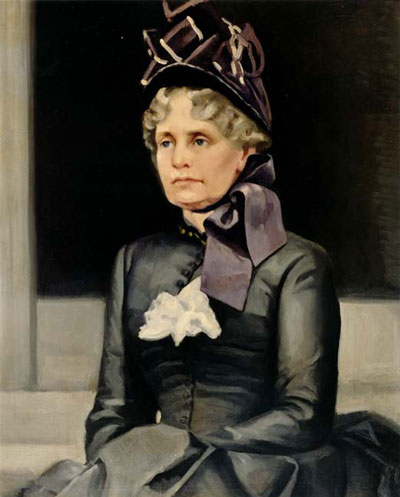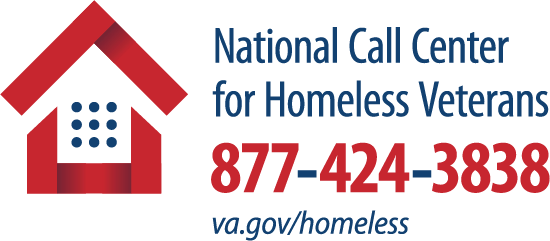Attention A T users. To access the menus on this page please perform the following steps.
1. Please switch auto forms mode to off.
2. Hit enter to expand a main menu option (Health, Benefits, etc).
3. To enter and activate the submenu links, hit the down arrow.
You will now be able to tab or arrow up or down through the submenu options to access/activate the submenu links.
Locator
Contact
Search
VA »
VA Homeless Programs
»
Emma Miller — VHA’s First Female Employee — Forged a Path for Today’s Women Leading HPO Programs
VA Homeless Programs
Emma Miller — VHA’s First Female Employee — Forged a Path for Today’s Women Leading HPO Programs
March 15, 2021
 During the Civil War, soldiers fallen by wounds and disease received care due to the collective relief efforts of the thousands of women who prepared bandages, sewed uniforms, distributed clothing and food packages, and staffed battle-side hospitals. When Emma Miller became the first employee of the National Asylum for Disabled Veterans, the first iteration of the Veterans Health Administration, the precedent was set for commissioning women to perform the important work they had done as volunteers in times of war.
During the Civil War, soldiers fallen by wounds and disease received care due to the collective relief efforts of the thousands of women who prepared bandages, sewed uniforms, distributed clothing and food packages, and staffed battle-side hospitals. When Emma Miller became the first employee of the National Asylum for Disabled Veterans, the first iteration of the Veterans Health Administration, the precedent was set for commissioning women to perform the important work they had done as volunteers in times of war.
Mrs. Miller joined forces with other women in Ohio after her husband was killed in the Civil War. Her desire to help soldiers ravaged by war led her to become involved with the Cleveland and Cincinnati branches of the U.S. Sanitary Commission, the only civilian-run organization charged by the federal government to assist the military. Commission volunteers delivered medical supplies to the battle front, built field hospitals, raised funds, and ran several temporary soldiers’ homes.
Throughout the war, Ohio, like the rest of the country, saw large numbers of men returning home with horrific disabilities. In January 1864, the Ohio General Assembly passed a resolution to establish a permanent state soldiers’ home for Union Veterans who needed continual support, and after the war ended, Mrs. Miller was appointed matron of the Ohio Soldiers’ Home in Columbus.
Meanwhile, in Washington, DC, a successful push to create a federally-run entity that would care for disabled Union Veterans culminated with Congress establishing the National Asylum for Disabled Volunteer Soldiers in 1865. The Board of Managers that was set up to run the National Asylum envisioned a system of branches located across the country where facilities dedicated to providing continual support for Veterans unable to care for themselves would be built. After considering where there was the greatest need for these facilities, the board established the Eastern, Northwestern, and Central branches.
The Central Branch took over the Ohio Soldiers’ Home where Mrs. Miller was matron, and the Board selected Dayton as the location for the new building and grounds. When the newly built National Asylum opened in 1867, Mrs. Miller transferred to Dayton, becoming matron of the largest and most ambitious facility among the three branches. In 1873, the National Asylum was renamed the National Home for Disabled Volunteer Soldiers. Over the years, the Board developed a better understanding of the population served by the National Home Program and recommended that Congress change the eligibility requirements to include all destitute soldiers unable to earn a living.
Throughout her career, Mrs. Miller earned the Board’s respect and admiration. In 1895, she was promoted to the position of superintendent of the general depot, which manufactured and distributed much of the clothing and supplies used by all the National Home Program’s branches throughout the country. She also was appointed to the Board, serving as its first woman officer , and became the first woman to receive a commission in the U. S. Army, rare occurrences in those times
Mrs. Miller performed her official duties until November 1913. When she died in 1914 at the age of 94, she became the only civilian to be buried with full military honors, adding to her list of firsts. The Dayton Times wrote in her obituary that Mrs. Miller possessed “Those characteristics which in a man go to make up the ‘Captains of Industry’…Respected, trusted and admired by her official superiors, loved in an unusual degree by her subordinates and those to whom she had ministered in hospital ward or in the home circle and highly esteemed by all who knew her, Mrs. Miller’s death, after the longest term of official service in the history of the National Home for Disabled Volunteer Soldiers, will leave a void that can scarcely be filled.”
Mrs. Miller’s dedicated service to Veterans paved the way for the women across VHA and the Homeless Programs Office who are leading programs critical to VA’s mission to prevent and end homelessness for Veterans and their families.
Make the Call
Dial 1-877-4AID-VET
(1-877-424-3838)
Access VA’s services for homeless and at-risk Veterans, available 24/7.
Chat Online
VA Medical Center
(VAMC) Locator
Locate Your Local
VA Medical Center Now
Veterans who are homeless or at risk of homelessness can call or visit their local VA Medical Center (VAMC) and ask for a Homeless Coordinator. Use the VA locator tool www.va.gov/directory to find your nearest VAMC and call or visit today.





























